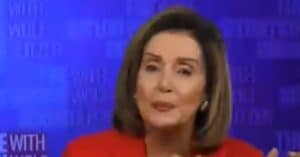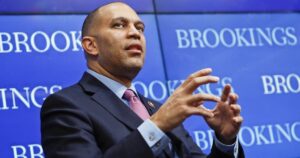Trump's tariff authority clash heads to Supreme Court
President Donald Trump’s bold tariff strategy is under fire and headed for a Supreme Court showdown.
This legal battle, challenging Trump’s power to slap hefty import duties on trading partners using a 1977 law, has sparked heated debates over executive authority and could reshape America’s trade landscape.
Let’s rewind to the start: On April 2, Trump unveiled a plan for a 10% baseline tariff on all nations, with steeper, reciprocal rates for specific countries like China, aiming to tackle trade imbalances and bolster U.S. manufacturing. It was a classic Trump move—prioritizing American workers over globalist hand-wringing. But not everyone cheered; 12 states, led by Oregon Attorney General Dan Rayfield, quickly sued to halt the plan.
Legal challenges mount against tariff power
Fast forward to May, when a three-judge panel at the U.S. Court of International Trade dropped a bombshell, ruling unanimously that Trump lacked “unbounded authority” to use the International Emergency Economic Powers Act (IEEPA) for tariffs. This wasn’t just a slap on the wrist—it was a direct challenge to executive reach.
Despite the ruling, the White House hasn’t backed down, continuing to roll out tariffs as if the legal storm doesn’t exist. Turns out, standing firm is the name of the game. But the U.S. Court of Appeals for the Federal Circuit stepped in, staying the lower court’s decision, keeping the tariffs in place for now.
Last week, an 11-judge panel at the Federal Circuit heard oral arguments, and the room was thick with tension as both sides faced tough questions. Oregon AG Dan Rayfield sounded hopeful, saying, “We are optimistic that, based on the oral arguments, we would see at least a partial win.” Optimism is nice, Dan, but courtrooms aren’t built on hope—let’s see if the law backs you up.
Supreme Court showdown looms large
Legal experts predict a ruling from the Federal Circuit could drop as early as August or September, given the expedited timeline. If it does, the case might land on the Supreme Court’s docket for the 2025-2026 term, starting in October. A decision could come by year’s end, setting a major precedent.
Both the Trump administration and the plaintiffs are ready to escalate to the Supreme Court if they lose at the appeals level. It’s no surprise—when the stakes involve presidential power, nobody backs down quietly. The consensus among analysts is that the justices will likely take the case, given the massive implications for executive authority.
Meanwhile, U.S. Attorney General Pam Bondi is all in, declaring, “Justice Department attorneys are going to court to defend [Trump's] tariffs, transforming the global economy.” That’s a bold claim, Pam, but transforming the economy takes more than courtroom bravado—it takes results. Still, her resolve to “continue to defend the president” signals no retreat from this fight.
Market uncertainty persists amid legal battle
The tariffs’ impact on markets remains a giant question mark, with experts noting that last week’s hearing didn’t ease broader economic jitters. When trade policies hang in limbo, businesses and consumers alike are left guessing. It’s a reminder that policy boldness often comes with a side of uncertainty.
Attorney Dan Pickard of Buchanan Ingersoll & Rooney captured the ambiguity, saying, “I don't know if I walked out of that hearing thinking that either the government is going to prevail, or that this is dead on arrival.” A mixed bag, indeed, Dan—turns out even legal eagles can’t predict this rollercoaster. His take reflects a broader truth: This battle is far from over.
Pickard also pointed out the Trump administration’s relentless focus, noting, “The Trump administration has had more of a focus on trade issues than pretty much any other administration in my professional life.” Credit where it’s due—prioritizing trade isn’t just talk; it’s action. Yet, progressive critics might argue it’s the action that risks global partnerships.
Alternative tools keep Trump’s trade agenda alive
Even if the Supreme Court rules against using IEEPA for tariffs, Pickard isn’t worried, stating, “There are going to be additional [trade] tools that have been in the toolbox for long that can be taken out and dusted off.” In other words, Trump’s team has a backup plan—and then some. Turns out, resilience isn’t just a slogan; it’s a strategy.
Pickard doubled down, musing, “Let's assume, even for the sake of the argument, just hypothetically, that the Supreme Court says this use of IEEPA exceeded your statutory authority.” He quickly added, “The Trump administration is not going to say, like, 'All right, well, we're done.’” No surrender here—when one door closes, another gets kicked open.
Finally, Pickard warned, “I don't think we're seeing an end to these issues anytime soon—this is going to continue to be battled out in the courts for a while.” Expect more legal fireworks, folks; this isn’t a sprint, it’s a marathon. While some may tire of the drama, protecting American interests demands staying the course, even if the road is bumpy.




